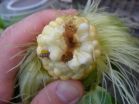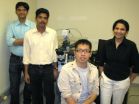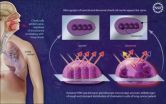(Press-News.org) Exposure to noise is a fact of life. At high levels, noise can damage hearing, and at lower levels it can disrupt sleep patterns, interfere with communications, and even cause accidents. A new National Academy of Engineering report characterizes the most commonly identified sources of noise, looks at efforts that have been made to reduce noise emissions, and suggests ways to decrease exposure in workplaces, schools, recreational environments, and residences.
Development of noise control technology needs immediate attention, said the committee that wrote the report. America should become more competitive in the production of low-noise products, both to improve quality of life and to advance innovation.
The committee recommends that the federal government explore potential engineering solutions along with changes in policy to control negative effects of noise in the workplace, in communities, and at home. These include cost-benefit analysis of noise reduction, especially for road traffic noise; improved metrics for noise control; lower limits for noise exposure in industry; "buy quiet" programs; wider use of international standards for noise emissions; airplane noise reduction technology; and noise control in public buildings. Improved cooperation between industry and government agencies, particularly the U.S. Environmental Protection Agency, is also called for.
INFORMATION:
The report, TECHNOLOGY FOR A QUIETER AMERICA, is available for immediate release. The Report in Brief, a summary of the report, is also available. To obtain a copy of the report, contact the Office of News and Public Information; tel. 202-334-2138, e-mail news@nas.edu, or visit the National Academies Press at www.nap.edu.
Report examines effects of noise and recommends ways to reduce levels
2010-10-08
ELSE PRESS RELEASES FROM THIS DATE:
NIH funds advanced development of 3 biodefense vaccines
2010-10-08
###
For more information, visit NIAID's Vaccines Web site at http://www.niaid.nih.gov/topics/vaccines/Pages/Default.aspx and Biodefense Web site at http://www.niaid.nih.gov/topics/biodefenserelated/Pages/default.aspx.
NIAID conducts and supports research-at NIH, throughout the United States, and worldwide to study the causes of infectious and immune-mediated diseases, and to develop better means of preventing, diagnosing and treating these illnesses. News releases, fact sheets and other NIAID-related materials are available on the NIAID Web site at http://www.niaid.nih.gov.
The ...
Despite highest health spending, Americans' life expectancy falls behind other countries'
2010-10-08
October 7, 2010—America continues to lag behind other nations when it comes to gains in life expectancy, and commonly cited causes for our poor performance—obesity, smoking, traffic fatalities and homicide—are not to blame, according to a study by researchers at Columbia University's Mailman School of Public Health. The study looked at health spending; behavioral risk factors like obesity and smoking; and 15-year survival rates for men and women ages 45 and 65 in the U.S. and 12 other nations -- Australia, Austria, Belgium, Canada, France, Germany, Italy, Japan, the Netherlands, ...
Transgenic corn suppresses European corn borer, saves farmers billions
2010-10-08
Transgenic corn's suppression of the European corn borer has saved Midwest farmers billions of dollars in the past decade, reports a new study in Science.
Research conducted by several Midwest universities shows that suppression of this pest has saved $3.2 billion for corn growers in Illinois, Minnesota, and Wisconsin over the past 14 years with more than $2.4 billion of this total benefiting non-Bt corn growers. Comparable estimates for Iowa and Nebraska are $3.6 billion in total, with $1.9 billion accruing for non-Bt corn growers.
Transgenic corn is engineered to ...
Tinnitus in the elderly is prevalent and impacts quality of life
2010-10-08
Alexandria, VA — Tinnitus is common among elderly Nigerians and associated with treatable health conditions like otitis media, rhinosinusitis, head injury and hypertension, according to new research published in the October 2010 issue of Otolaryngology – Head and Neck Surgery.
Nearly 36 million Americans, however, suffer from tinnitus or head noises. It may be an intermittent sound or an annoying continuous sound in one or both ears. In Nigeria, tinnitus affects between 10.1% and 33% of the population, with about 3 to 4% consulting a doctor on at least one occasion in ...
New deep-sea hot springs discovered in the Atlantic
2010-10-08
Scientists from the MARUM Center for Marine Environmental Sciences and the Max Planck Institute for Marine Microbiology in Bremen on board the German research vessel Meteor have discovered a new hydrothermal vent 500 kilometres south-west of the Azores. The vent with chimneys as high as one meter and fluids with temperatures up to 300 degrees Celsius was found at one thousand metres water depth in the middle of the Atlantic Ocean. The discovery of the new deep-sea vent is remarkable because the area in which it was found has been intensively studied during previous research ...
Novel protein critical for cellular proliferation discovered
2010-10-08
Accurate duplication of genetic material and the faithful segregation of chromosomes are critical for cell survival. The initiation of DNA replication is linked both to cell cycle progression and chromatin organization. In plants, animals and other "eukaryotes," the assembly of a multi-protein complex called pre-replicative complex (preRC) is the first step in the initiation of DNA replication. As the name implies, origin recognition complex (ORC) proteins bind to origins of DNA replication. Subsequently, other components of preRC are assembled at these sites. In addition ...
An X-ray for your genes
2010-10-08
Prescription drugs and their dosages may be standardized, but not every patient reacts to a medicine in the same way. The personal genetic characteristics of individuals and populations can explain why a specific prescription successfully treats one patient and not another, so medical researchers are adopting the new approach called "personalized medicine" and a Tel Aviv University lab is leading the way.
Dr. Noam Shomron of Tel Aviv University's Sackler Faculty of Medicine is developing a new method for the advancement of personalized medicine, an expanding area of ...
Queen's University discovery could impact how the body receives medicine
2010-10-08
Researchers at Queen's University have discovered how molecules in glass or plastic are able to move when exposed to light from a laser. The findings could one day be used to facilitate medicinal drug distribution by allowing doctors to control the time and rate at which drugs are delivered into the body. The drugs, in a solid plastic carrier, could be released through the body when exposed to light.
Lead researcher Jean-Michel Nunzi, a professor in the departments of Chemistry and Physics, has determined that "molecular cooperation" is what allows the molecules to move ...
You may not be able to say how you feel about your race
2010-10-08
INDIANAPOLIS –A new study from the School of Science at Indiana University-Purdue University Indianapolis looks at how much African Americans and whites favor or prefer their own racial group over the other, how much they identify with their own racial group, and how positively they feel about themselves.
The work, by Leslie Ashburn-Nardo, Ph.D., associate professor of psychology in the School of Science at IUPUI, looked at both consciously controllable sentiments and gut feelings about social stigma and found a significant difference in both groups between what people ...
Cheek swab may detect lung cancer
2010-10-08
Early detection is critical for improving cancer survival rates. Yet, one of the deadliest cancers in the United States, lung cancer, is notoriously difficult to detect in its early stages.
Now, researchers have developed a method to detect lung cancer by merely shining diffuse light on cells swabbed from patients' cheeks.
In a new clinical study, the analysis technique--called partial wave spectroscopic (PWS) microscopy--was able to differentiate individuals with lung cancer from those without, even if the non-cancerous patients had been lifetime smokers or suffered ...




